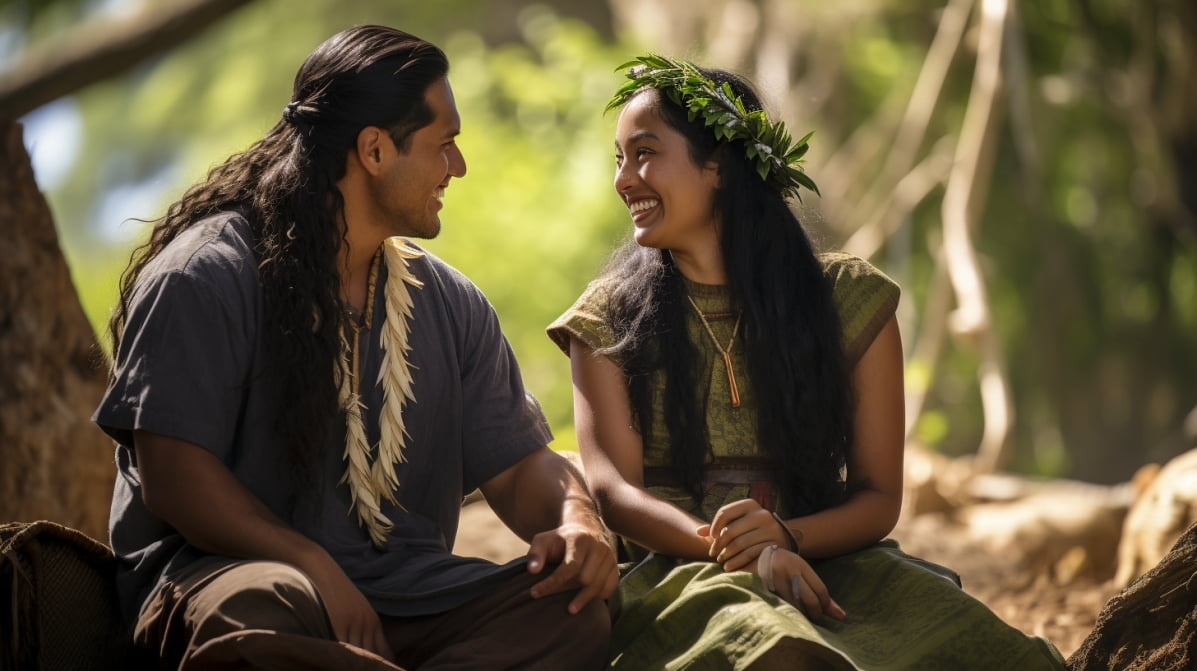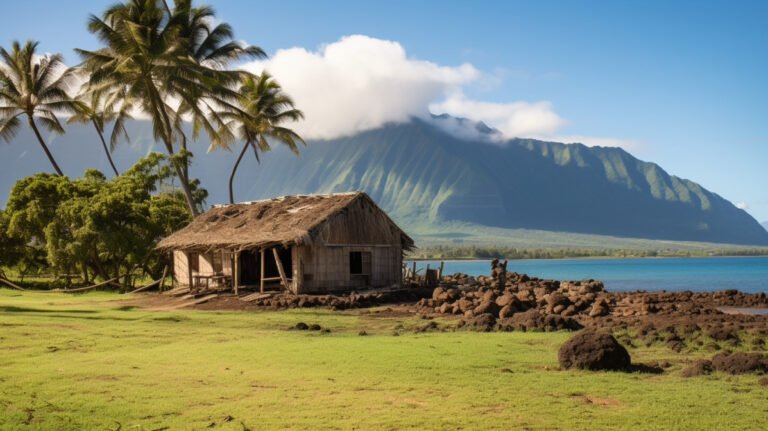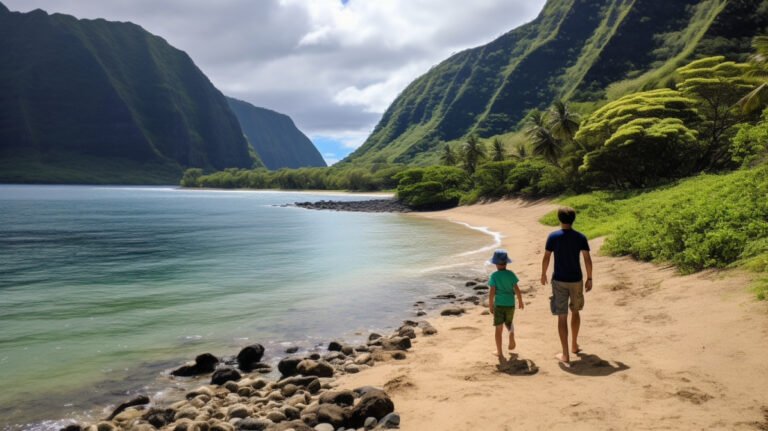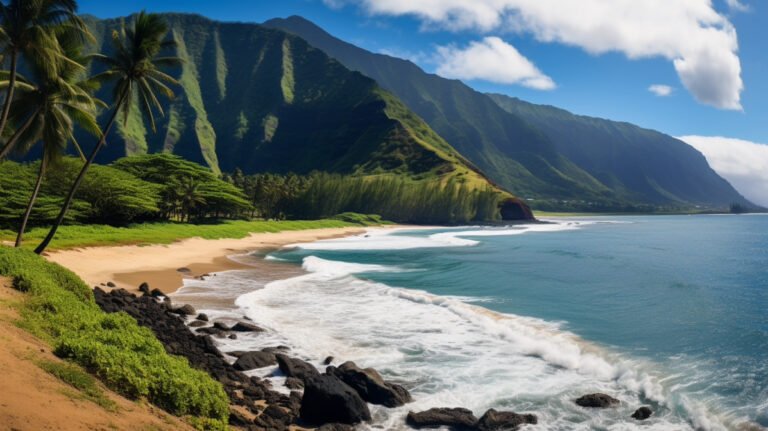Unveiling the Treasures of the Molokai Language 🌺
Hawaii is known for its picturesque scenery, tropical climate, and vibrant culture. Among the many cultural treasures that make Hawaii unique is the Molokai Language, a dialect of the Hawaiian language that is spoken on the island of Molokai.
The Hawaiian language has a rich history, dating back to the Polynesian migration to the islands over a thousand years ago. Molokai Language, a specific dialect of Hawaiian, has unique features that set it apart from other dialects spoken in Hawaii.
Key Takeaways:
- The Molokai Language is a dialect of the Hawaiian language
- The Hawaiian language has a rich history dating back over a thousand years
- The Molokai Language has unique features that distinguish it from other dialects in Hawaii
The Origins of the Molokai Language
The Molokai Language is a unique dialect of the Hawaiian language, which is part of the Austronesian language family. The Hawaiian language is considered an indigenous language, and the Molokai dialect is one of several regional variations that developed over time.
The origins of the Molokai Language can be traced back to the earliest inhabitants of Hawaii, the Native Hawaiians. The language was used to transmit knowledge, customs, and beliefs from generation to generation, and it played a critical role in maintaining cultural identity.
The Hawaiian language has its roots in the ancient Polynesian languages, which were brought to the islands by early settlers. Over time, the language evolved and adapted in response to the unique environment and culture of Hawaii.
The Historical Context
The Molokai dialect developed in the context of the island’s distinctive social and cultural history. Molokai Island was home to a significant concentration of Native Hawaiian communities, which helped to preserve the language and traditions of the culture.
Like other regional dialects, the Molokai Language has its own distinct features in terms of syntax, grammar, and vocabulary. However, it is also closely related to other Hawaiian dialects, and speakers from different regions can generally understand each other.
Despite the challenges faced by the Molokai Language and other indigenous languages, efforts are underway to preserve and promote them as a vital part of Hawaii’s cultural heritage.
Understanding the Molokai Dialect
The Molokai dialect is one of the most distinctive varieties of the Hawaiian language, characterized by its unique vocabulary, pronunciation, and grammar patterns. While it shares many features with other dialects spoken throughout the Hawaiian Islands, the Molokai dialect is renowned for its subtle nuances and poetic qualities.
One of the most notable differences between the Molokai dialect and other Hawaiian dialects is its use of the glottal stop, or ʻokina, in words where it is typically not used. This gives the dialect a distinctive rhythm and cadence, making it instantly recognizable to those familiar with the language.
Another distinguishing feature of the Molokai dialect is its use of certain vocabulary words that are not found in other Hawaiian dialects. For example, the word “hua” is commonly used on Molokai to refer to fruit, whereas other Hawaiian dialects use the word “hua” to mean “egg.”
The Molokai dialect also features unique sentence structures and grammar patterns that set it apart from other Hawaiian dialects. For example, the dialect often uses the particle “mai” to indicate a sense of command or urgency, as in the phrase “hoʻomaikaʻi mai” which means “praise me now.”
While the Molokai dialect is becoming increasingly rare in modern times, efforts are being made to preserve and promote this unique variety of the Hawaiian language. By recognizing and celebrating the distinct features of the Molokai dialect, we can help ensure that this important aspect of Hawaiian culture and heritage is not lost to future generations.
Importance of Language Preservation
The Molokai Language is not only a unique dialect of the Hawaiian language, but it is also an essential part of the Hawaiian culture and heritage. As an indigenous language, it serves as a vital link to the knowledge, traditions, and stories of the Native Hawaiian people.
Language preservation is crucial for maintaining cultural identity and fostering community cohesion. When a language is lost, so too is the wealth of knowledge and history that is embedded within that language. The Molokai Language, like many other Native American and Indigenous languages, is at risk of disappearing due to various factors, including globalization and cultural assimilation.
Efforts to preserve the Molokai Language are not only about language itself but are also about preserving the broader Hawaiian culture and heritage. Language and culture are intertwined, and the loss of one results in the loss of the other.
Importance of Language Preservation
The importance of language preservation cannot be overstated. It serves as a foundation for cultural traditions, knowledge transmission, and community building. Language is not just a means of communication; it is an essential part of our identity and heritage.
“Language is the carrier of culture, and it is through language that culture is passed from one generation to the next.” – Elaine L. Hale
For Native Hawaiians, language preservation is crucial for reconnecting with their ancestry, reclaiming their cultural identity, and fostering a sense of belonging within their community. By preserving the Molokai Language, we are not only preserving a unique dialect but also a part of the broader Hawaiian culture and heritage.
Molokai Language in Education
The Molokai Language plays a vital role in education, particularly for Native Hawaiian students. Efforts to incorporate the Molokai dialect into schools and community programs have been underway for decades.
Bilingual education has been shown to improve academic performance and cultural competency, especially for students from historically marginalized communities. In Hawaii, the Molokai Language has been integrated into curriculum at various levels, from preschool to college.
Many schools on Molokai Island offer classes in the Molokai Language, and community programs have been established to support language learning for all ages. These efforts not only promote language preservation but also instill cultural pride and promote intergenerational learning.
The Significance of Molokai Island
Molokai Island holds a special place in the preservation and promotion of the Molokai Language. As one of the least developed islands in Hawaii, Molokai has managed to maintain much of its cultural heritage, including its unique dialect.
The island’s rich history and connection to the land have made it a stronghold for language revitalization efforts. Molokai has a strong community of Native Hawaiian speakers who continue to pass on their knowledge and expertise to the next generation.
Molokai Language and Hawaiian Culture
The Molokai Language has a profound connection to Hawaiian culture, serving as a vital link to ancestral knowledge and identity. Language is intertwined with traditions, ceremonies, and storytelling, shaping the cultural landscape of Hawaii.
The Molokai Language has a unique vocabulary that reflects the island’s geography, flora, and fauna. It includes words specific to fishing, hunting, and farming, reflecting the island’s self-sufficient lifestyle. The language continues to evolve, with new words and phrases being created to describe contemporary experiences and technologies.
“Language is a fundamental part of our culture. Without the language, we lose the meaning of words and how they relate to our culture. Words are our way of communicating with our ancestors, and they connect us to our past.”
The Importance of Language in Hawaiian Culture
Language is essential in preserving and transmitting Hawaiian cultural practices and knowledge. Hawaiian language plays a crucial role in music, dance, and storytelling, which are integral parts of Hawaiian culture. For instance, hula, a Hawaiian dance, tells stories through movement and chants, accompanied by traditional instruments, linking it to Hawaiian oral traditions. Therefore, language revitalization efforts are necessary to preserve Hawaii’s unique culture and heritage.
Honoring Ancestral Knowledge through Language
Language preservation is a way of honoring ancestral knowledge, connecting current and future generations to their cultural heritage. Native Hawaiian scholars and activists work tirelessly to maintain and promote the Molokai Language and other indigenous languages. Their efforts are based on a deep understanding of the significance of language as a vehicle for cultural and spiritual expression, community building, and identity formation.
Language is a crucial component of Hawaiian identity, and the Molokai Language is a vital part of Hawaii’s linguistic heritage. Its preservation and promotion are essential for the survival of the Hawaiian culture and the connection of future generations with their ancestral knowledge and traditions.
Challenges and Future Prospects
Despite the efforts made to preserve and promote the Molokai Language, there are still substantial challenges that need to be addressed. One of the primary challenges is the threat of language loss, as fewer and fewer Native Hawaiians speak the Molokai dialect fluently. This loss of language not only affects the cultural identity of the Hawaiian people but also hinders the transmission of traditional knowledge and practices.
Another challenge is the limited resources available for language preservation programs. Many community-led initiatives rely on volunteers and donations, which can be unstable and insufficient to sustain long-term language revitalization. Additionally, the Molokai Language faces competition with the dominant English language in education, media, and business, which further marginalizes its cultural significance.
Despite these challenges, there are promising initiatives and future prospects in revitalizing and promoting the Molokai dialect. One such initiative is the establishment of language immersion schools, where students are taught exclusively in the Molokai Language from a young age. These schools have proven effective in preserving and transmitting indigenous languages and promoting cultural awareness among young people.
Another promising prospect is the use of technology to supplement language preservation efforts. Digital platforms such as websites, apps, and social media can facilitate the spread of language learning resources and community engagement. They also offer new opportunities for Native Hawaiians to connect with their cultural heritage and linguistic roots.
In conclusion, while there are significant challenges facing the preservation and promotion of the Molokai Language, there are also promising initiatives and future prospects that offer hope for the revitalization of this unique linguistic heritage. By supporting language preservation programs and embracing bilingual education, the Molokai dialect can continue to serve as a vital link to Hawaii’s rich cultural and linguistic heritage.
The Impact of the Molokai Language
The Molokai Language plays a vital role in preserving and promoting Hawaiian culture and heritage. Its impact extends far beyond the spoken and written word, influencing traditions, arts, and cultural practices.
The revitalization of the Molokai dialect has brought Native Hawaiians together, creating a stronger sense of community and identity. Language is not just a means of communication but a link to ancestral knowledge and traditions, connecting present and future generations to their cultural heritage.
Efforts to preserve and promote the Molokai Language have also contributed to increased awareness and appreciation of Hawaiian culture. The language has been integrated into education programs, cultural events, and media platforms, raising its profile and expanding its reach.
Furthermore, language preservation efforts have supported the revival of traditional practices such as hula, chant, and traditional medicine, reinforcing the connection between language and culture.
Overall, the impact of the Molokai Language extends beyond the realm of linguistics. It enriches the cultural fabric of Hawaii, fosters community pride and identity, and promotes the transmission of ancestral knowledge and values through language.
Conclusion
In conclusion, the Molokai Language represents an invaluable cultural treasure that links Native Hawaiians to their ancestry and traditions. With its distinctive origins and linguistic features, this dialect symbolizes Hawaii’s living heritage. Understanding and revitalizing the Molokai Language through education and community efforts is key to preserving Hawaiian culture.
This rich linguistic tradition deserves to be safeguarded and passed on. Experience the Molokai Language firsthand and gain deep appreciation for Hawaii’s cultural roots. Download the Molokai Travel Guide Molokai Travel Guide to learn how you can help support the resilience of this vital heritage. Let the echoes of history come alive through the Molokai Language.







